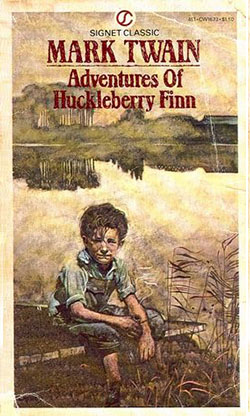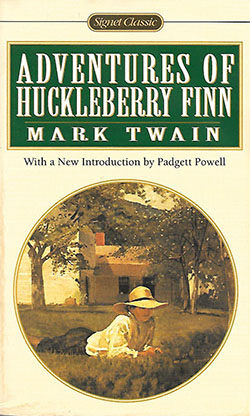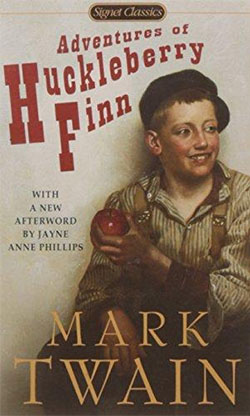A break from the bundle backlog! After typing up the previous entry in this log I realized I maybe should play some games that I actually like, for a change. Done.
• The Talos Principle (2014): Croteam (Zagreb, Croatia) [28 hrs]
Purchased 12/28/17 in the Steam Winter Sale for $7.99 (down from $39.99!).
Excellent. Gently surreal uninhabited idylls filled with lock-and-key puzzles, a.k.a. Myst, but this is surely the cleverest narrative justification the genre has ever received. The particular aesthetics of these idylls were rewarding for me; I was pleasantly reminded of my recent visit to Pompeii, which I think is exactly what the designers had in mind. I was also affected by the level that seemed to be a take on Böcklin’s Toteninsel; the chance to go “inside” an evocative piece of art is one of the greatest gifts of computer games. All in all, a bunch of tasty make-believe places to spend some time.
Furthermore the actual puzzles are good too, basically revolving around the principle of locking/unlocking at a distance by line-of-sight. This is a simple and solid mechanic, and despite being intuitive and obvious, was genuinely new to me. Quibble is that there’s some redundancy, a sense of filler, over the course of this fairly long-for-a-puzzle-game game. Second quibble: of the two voice performances, one — the female voice you hear in the trailer — isn’t very good, and unfortunately it has a lot to say. Otherwise strongly recommended!
• The Talos Principle: Road to Gehenna (2015): Croteam (Zagreb, Croatia) [12 hrs]
DLC (“DownLoadable Content“! We’ve been through this before!) for the preceding. I bought it on 12/30, after enjoying the main game for only two days, because it already seemed clear I was going to want it and I didn’t want to miss the sale price: $3.74.
This is the good kind of DLC, where the new stuff actually feels more polished than the original game, because the designers’ understanding of their own creation has grown more confident and mature. This set of puzzles is more varied, less redundant, and overall harder than those in the main game. In fact the set of optional extra challenge puzzles at the very very end are legitimately tough nuts. Which I was glad for. Even the writing was stimulating! There was a distinct sense of “let’s not just phone this in by grinding out more of the same, let’s come up with a new subject of interest and take it seriously.” Admirable all around.
• DROD: King Dugan’s Dungeon (1996–2005): Caravel Games (Seattle, WA / Provo, UT / various) [35 hrs]
“D.R.O.D.” = “Deadly Rooms of Death.” An old friend. Played the original in 1998, then checked out the revamped edition in 2008 or so. I guess once every 10 years seems to be the rhythm because look what time it is. I recently learned that the version on Steam had some new “challenges” incorporated into it, involving doing old puzzles in newly constrained ways, and I’m a big enough fan that that’s an enticement. I had bought the first three games in this series from GOG on 6/14/14, bundled on sale for a total of $2.49 — good deal! — but those copies didn’t include the challenges, so on 1/1/18 I repurchased them on Steam, on sale for: $2.49 again. Sometimes it’s disturbing how cheap games are.
This is possibly my favorite game of all time? The ultimate computer game? The greatest puzzle game ever made? I’m not sure if any of those things is entirely true, but some kind of superlative certainly applies here. Not sure I can fully explain the grip it holds on me, but essentially: it’s like an infinite toybox. Each puzzle-room is a new surprise pulled out from its depths, and there are thousands upon thousands of rooms out there. This is a construction kit that can generate genuinely interesting and substantial puzzles, seemingly without limit. It’s a thing of beauty. And there’s something of the platonic ideal of videogaming, to me, in the way it’s simultaneously continuous action AND turn-based strategy — in its world, these are identical. Just as it’s simultaneously pure logic puzzle AND fantasy dungeon adventure — again, it makes these identical. It’s like the nexus of all gaming.
The game’s aesthetic quirks and shortcomings are to me endearing. Or maybe that’s even too condescending: they’re genuinely engaging in their own right. Suave and polished is not the only way worth being! DROD is profoundly unselfconscious in the greatest nerd tradition. It feels like something purer and more unembarrassed than “the industry” will ever know, and reminds me of the bygone computer culture of my youth, when the homeliest of homemade games sat shoulder-to-shoulder with intricate commercial products. Listening to voice-over done by programmers, and following along a storyline like something your friend would write in their notebook in 6th grade — at some level, though I do occasionally roll my eyes, these things make me feel that I’m somewhere healthy, somewhere worth being.
As for this first game in the series: yeah, it’s a little unbalanced, with weird difficulty spikes and several tedious stretches. And the “challenges” turned out to be a mixed bag at best. But overall it holds up and I was happy to be back.
• DROD: Journey to Rooted Hold (2005): Caravel Games (Seattle, WA / Provo, UT / various) [52 hrs]
[There’s no dedicated trailer for just this one — the trailer above includes scenes from both of these first two games in the series.]
Played through way back in 2005, but was eager to take a second pass as part of this “let’s just play all of DROD in chronological order, dammit” kick.
Second game in the series brings new polish, new variety, and a significant increase in the amount of storytelling, which in this case means doofiness. When I first played this years ago I was a little turned off by that; compared to the relatively plotless first game, it felt like a regrettable downturn toward terminal dorkitude. But this time around, I really felt the opposite: that it was a welcome, cozy dumbness. It drew me in.
Again I was was eager to check out the “challenges,” a few of which turned out to be pretty cruel and tedious, maybe to the detriment of my overall enjoyment, which luckily is robust enough to take a few hits, no problem.
• DROD: Smitemaster’s Selections: 1. The Choice (2005): Neil Frederick [2 hrs]
• DROD: Smitemaster’s Selections: 2. Perfection (2005): Larry Murk [17 hrs]
• DROD: Smitemaster’s Selections: 3. Halph Has a Bad Day (2006): Eytan Zweig [6 hrs]
• DROD: Smitemaster’s Selections: 4. Beethro and the Secret Society (2006): Jacob Grinfeld [11 hrs]
• DROD: Smitemaster’s Selections: 5. Beethro’s Teacher (2006): Henri Kareinen [33 hrs]
• DROD: Smitemaster’s Selections: 6. Master Locks (2007): Larry Murk [8 hrs]
• DROD: Smitemaster’s Selections: 7. Smitemastery 101 (2007): Jacob Grinfeld [4 hrs]
[No trailers for any of these things because they were made by and for superfans, who don’t need to be advertised to.]
Yes! That’s right! It’s more DROD! The plan is thus to go through all the official content in order of release. That means between the second and third games, all of these things.
I bought the complete “Smitemaster’s Selections” DLC bundle (12 in total) at the same time I bought the preceding games, 1/1/18, for $3.72. I splurged, what can I say.
So what are they. Well, another reason why DROD is the best computer game of all time — the most computer-game-y computer game of all time — is because the built-in level editor can be used by players to create, as suggested above, genuinely rewarding and original content. The things that make the games so great are exactly the things that a “modding” culture can take fullest advantage of. So the line between “official” content and “fan-made” content is, though clearly marked, deliberately faint. These “selections” are fan-made levelsets that were chosen for deluxe treatment by the developers — adding story and voice acting, more thorough testing, etc. etc. — and thus were elevated to being a more or less commercial product.
As you might expect from fan-made content, these are generally more compact, quirkier, and on average far, far harder than the main games. For those reasons they’re also sometimes the most stimulating. I wasn’t sure what to expect — I had never played any of these before — but for the most part I had a really good time. No. 5 of these is the hardest DROD content I’ve encountered anywhere, by a long shot, and also maybe the best. And generally I liked having personality brought to the fore. When you’re wrestling with a puzzle, you’re wrestling with a particular person. Here that became palpable.
Much much more DROD to come, rest assured.
[No trailer available for such an old game. Here’s some gameplay from the tutorial area to give a sense.]
• Fish Fillets (1998): ALTAR Interactive (Brno, Czech Republic) [played for maybe 6 hours?]
I almost forgot, I played one other game on and off during this period, one that I’d tried a few times before but never gotten into. This was my most committed attempt yet and probably will be my last. It’s sort of a Sokoban/sliding puzzle with two player characters, gravity, and a lot of movement restrictions, some of which are extremely counter-intuitive. It’s a brutally unforgiving bastard of a puzzle game from the outset, and then even if you do manage to master the full ruleset, the puzzles ascend to really crazy levels of intricacy (here’s the solution to a late-game puzzle, just to give an idea). And wow, talk about folk art. The two fish do comedy routines in Czech while you’re playing (really!), and the puzzles involve moving deliberately goofy stuff around to deliberately goofy music. Like, say, a big toilet. Get it?
The reason I stopped wasn’t the actual puzzles, though there is certainly an element of infuriation there — it’s the extremely antiquated program itself, which is intensely clunky and slow to respond, and has no undo system, pretty much unforgivable when wrestling with problems of this depth, at least at my current levels of patience. Turns out there’s a much better implemented sequel from 2007, in which all my issues were addressed. Watch this spot.
These days, the original Fish Fillets is available free for every imaginable system, by the way. Have at it, I guess. Or don’t.






